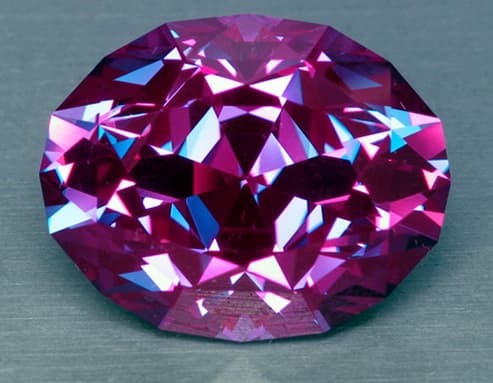
Is Lab-Created Alexandrite Real Alexandrite?
Natural alexandrite is popular and rare, which creates a market for synthetics. But is lab-created alexandrite real alexandrite? Learn the facts here.
2 Minute Read
Answer: It's unlikely your alexandrite is a natural stone. However, it may still be a real alexandrite.
What is a Synthetic or Lab-Created Alexandrite?
Natural alexandrite, mined from the Earth, is very rare and quite stunning. These factors help create a market for synthetic alexandrite, especially as an option for jewelry use. Alexandrite has developed such a mystique that it's become a popular alternative to the traditional June birthstone: pearl.
Although synthetic gemstones are created in a lab, they have the same optical and physical properties as their mined counterparts. They grow from the same chemical ingredients under the same conditions as natural gems, only at an accelerated rate. Lab-created alexandrites are real alexandrites.
Do Lab-Created Alexandrites Have the Same Color Change as Mined Alexandrites?
Gemstone enthusiasts love natural alexandrites for their color changing properties. So, of course, synthetic alexandrites also have these properties. The most spectacular and prized transformation is from green in daylight to red in incandescent light. Gemologists refer to this particular color shift as the "alexandrite effect," even when it occurs in other gem species like garnets and sapphires.
Mined in Espírito Santo, Brazil, this alexandrite crystal appears green in white light but red in ultraviolet longwave light. Photos by Géry Parent. Licensed under CC By-ND 2.0.
The blue-to-purple color change in your gem does occur in natural alexandrites. However, it occurs very rarely and mostly in newer finds in Africa. Since your ring is over 50 years old, your stone likely didn't come from these finds. Your color shift more likely indicates a hydrothermally lab-grown alexandrite.
Is a Lab-Created Alexandrite Valuable?
Hydrothermally grown alexandrites are some of the more valuable synthetic gems of any kind. Still, they have nowhere near the value per carat of a natural alexandrite.
For more information on alexandrite value, read our buying guide.
What Gemstones Can Imitate Real Alexandrites?
If you're disappointed, take heart that at least you have a real alexandrite, not an imitation or simulant.
Some jewelry pieces are sold with gems said to be alexandrites that are actually non-alexandrite color change chrysoberyls. (Alexandrite is a variety of chrysoberyl). Also, cheap so-called "alexandrite jewelry" usually features synthetic color change corundum instead. You might even encounter a color-change glass imitation known as zandrite. These imitations are nowhere near as valuable as either natural or synthetic alexandrite.
Some vendors may even sell these imitation gems as "synthetic alexandrites." (After all, a synthetic alexandrite will still fetch more than a synthetic corundum or a zandrite). Buyer beware!
Donald Clark, CSM IMG
Related Articles
Alexandrite Value, Price, and Jewelry Information
10 Gemstones Rarer than Diamond: The Earth’s Scarcest Treasures
Alexandrite Buying Guide
How Can a Gemstone’s Optic Sign Change?
Latest Articles
800 Years of Mogok: A Celebration in Tenuous Times
What is the Average Gemstone Faceting Yield?
Pyroxmangite Value, Price, and Jewelry Information
How to Identify Emerald Simulants and Synthetics
Never Stop Learning
When you join the IGS community, you get trusted diamond & gemstone information when you need it.
